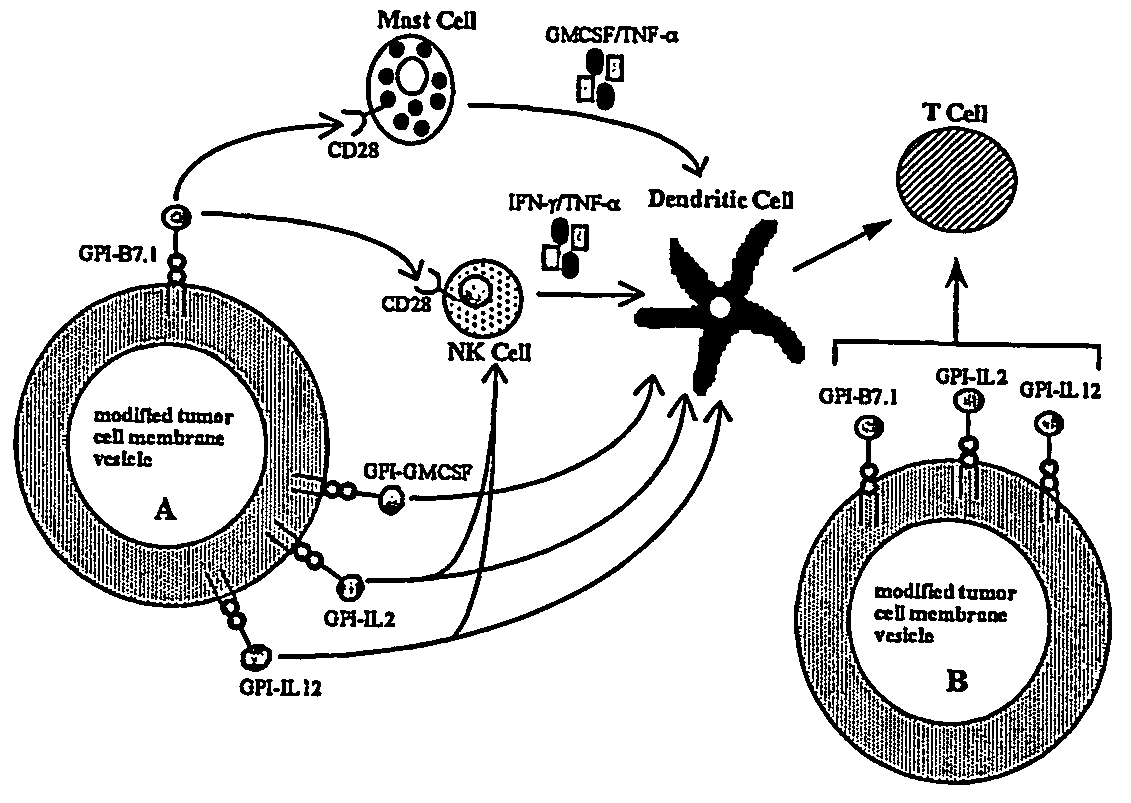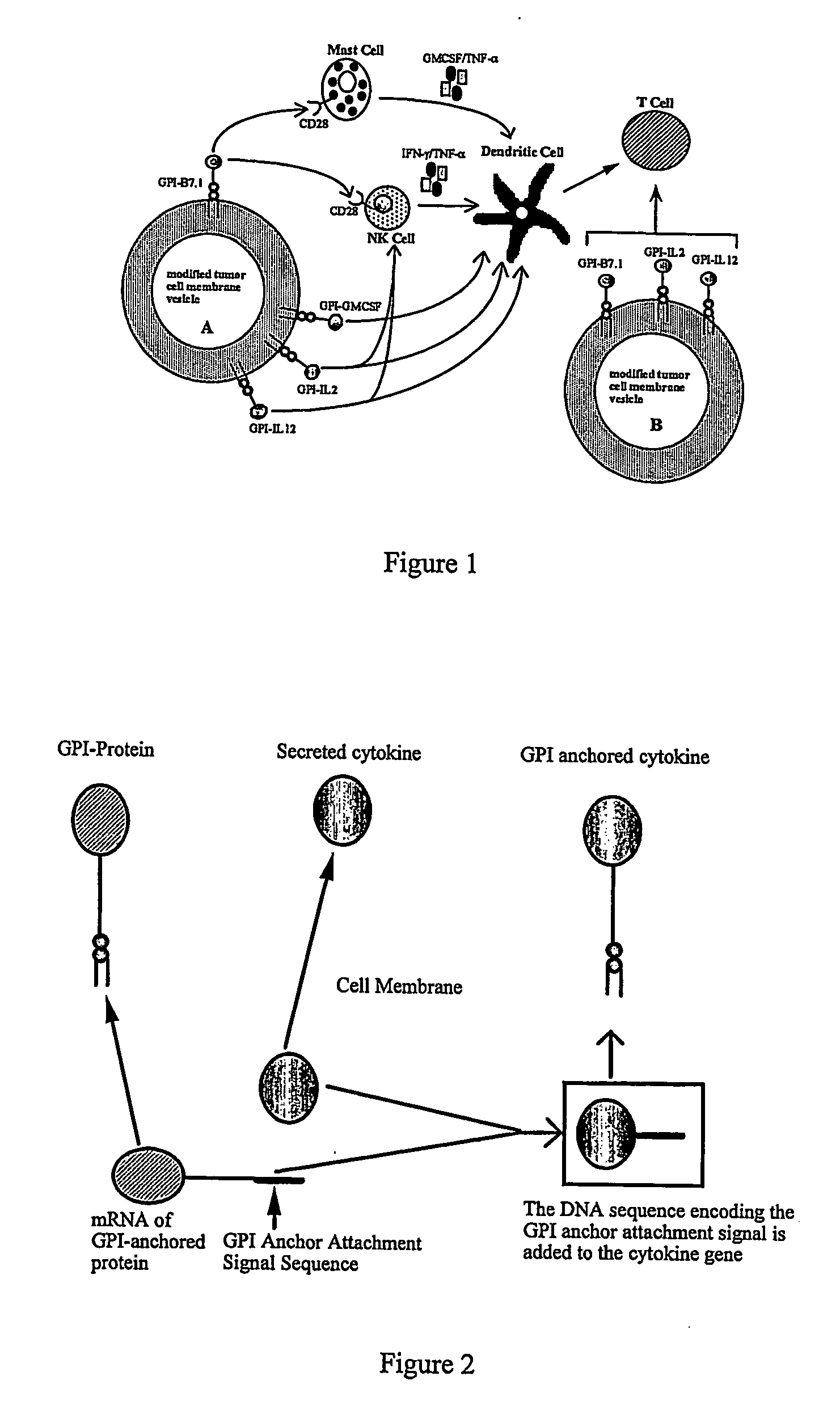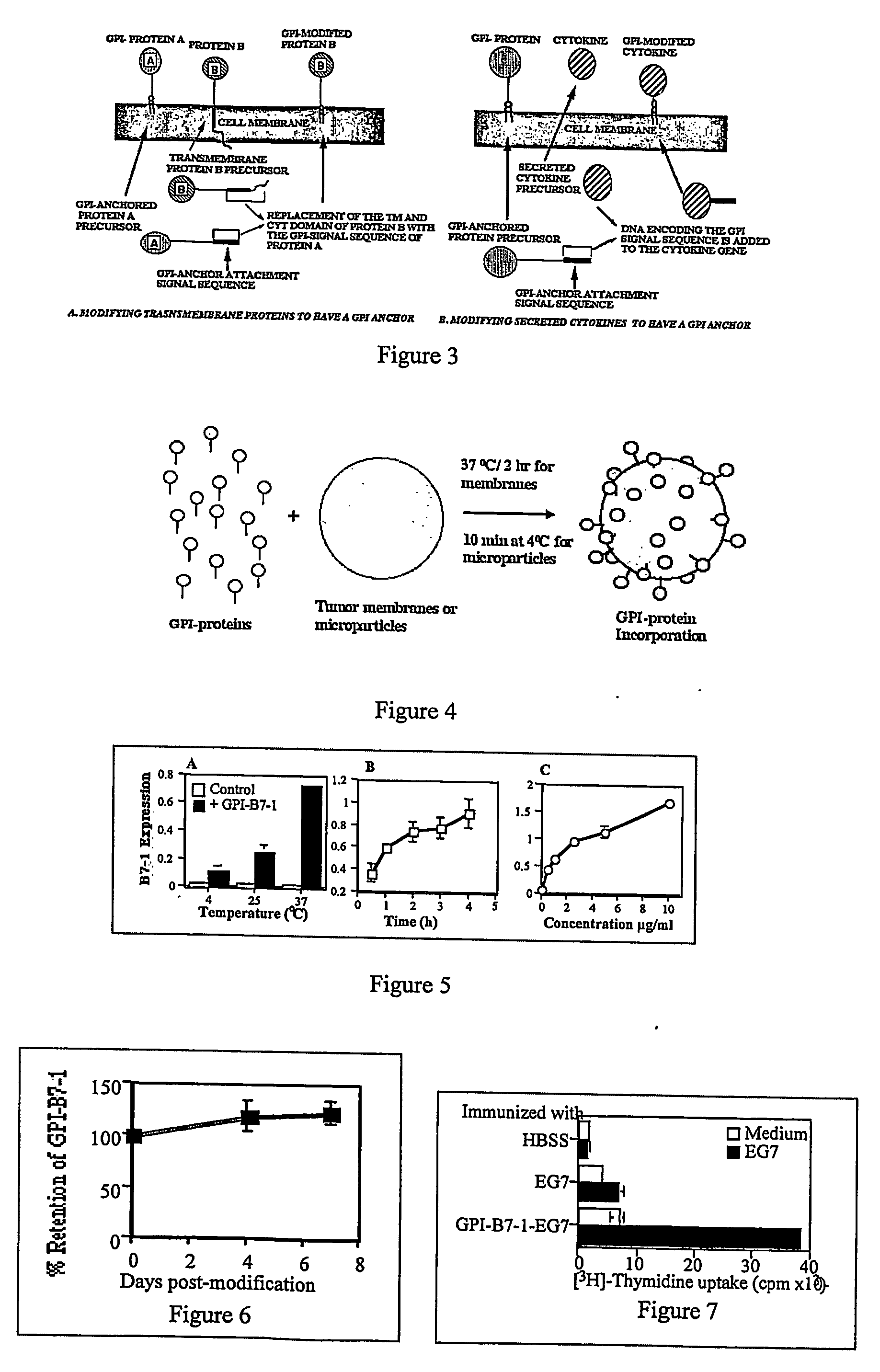Therapeutic Compositions and Vaccines By Glycosyl-Phosphatidylinositol (Gpi)-Anchored Cytokines and Immunostimulatory Molecules
a technology of glycosyl phosphatidylinositol and immunostimulatory molecules, which is applied in the field of tumor vaccines, can solve the problems of high patient toxicity of systemic delivery of il-12, difficult systemic administration of il-2 to humans, and low success rate of method, so as to suppress immunity and induce tolerance
- Summary
- Abstract
- Description
- Claims
- Application Information
AI Technical Summary
Benefits of technology
Problems solved by technology
Method used
Image
Examples
example 1
Protein Transfer of GPI-Anchored Costimulatory Molecules onto Membranes Prepared from Cultured Cells and Tumor Tissue to Prepare Tumor Vaccine
[0122] Proper conditions for protein transfer. The proper conditions for the protein transfer of GPI-B7-1 onto isolated membranes were determined. Isolated-tumor membranes were prepared from tumor cells after hypotonic lysis, followed by centrifugation on a 41% sucrose solution (Maeda, T., et al., Biochim. Biophys. Acta 731:115 (1983)). GPI-B7-1 was purified from CHO cell transfectants by a single step affinity chromatography and incubated with isolated membranes. These membranes were washed and the incorporation of GPI-B7-1 was quantitated by ELISA or flow cytometry. GPI-B7-1 incorporation onto isolated-membranes was the highest at 37° C. as compared with incorporation at 25° C. and 4° C. (FIG. 5A). Another parameter shown to influence the protein transfer was the duration of incubation. As little as 30 min was enough for GPI-B7-1 incorporat...
example 2
Direct Modification of Cell Membranes Isolated from Surgically Removed Tumor Tissue with GPI-Anchored Costimulatory Molecules
[0126] Establishing tumor cell lines from human tumor tissue. Out of 67 tumor samples of various histological origin, 5 cell lines could be established. This result is consistent with reports (Smythe, J. A., et al., J. Immunol. 163:3239 (1999); Simons, J. W., et al., Hum. Gene Ther. 57:1537 (1997)) that it is difficult to establish primary tumor cell lines.
[0127] GPI-B7-1 modification of tumor membranes isolated from tumor tissue. Tissues were homogenized in hypotonic lysis buffer and membranes were prepared by centrifugation on a 41% sucrose solution (Maeda, T., et al., 1983, supra). The results from several surgically removed renal cell carcinoma (RCC) and one melanoma are represented here. Flowcytometric and ELISA analysis of these membranes showed that membranes from tumor samples did not express B7-1, but express MHC class I NHC class II, and CD59. This...
example 3
GPI-B7-1-Modified Tumor Membranes Induce Partial Protection in Other Tumor Systems
[0133] The efficacy of the GPI-B7-1-modified tumor membranes to induce antitumor immunity was also evaluated in murine melanoma and breast cancer models. Membrane preparation and immunization protocols that showed complete protection in the EG7 thymoma model were used.
[0134] Delay in tumor development in murine melanoma model Membranes were prepared from K1735M2 (M2) a murine melanoma cells. These membranes were modified to express GPI-B7-1 by protein transfer. M2-transfectants expressing the transmembrane-anchored B7-1 (TM-B7-1) or GPI-B7-1 were established by transfecting corresponding cDNAs. Membranes prepared from the transfectants and wild type cells were used as controls. Tumors developed as early as 15-20 days in mice immunized with M2 membranes without B7-1 and both the control groups (HBSS or IL-12 alone) (FIG. 10A). All mice in these control groups were sacrificed because of large tumor siz...
PUM
| Property | Measurement | Unit |
|---|---|---|
| size | aaaaa | aaaaa |
| physiological temperature | aaaaa | aaaaa |
| molecular weight | aaaaa | aaaaa |
Abstract
Description
Claims
Application Information
 Login to View More
Login to View More - R&D
- Intellectual Property
- Life Sciences
- Materials
- Tech Scout
- Unparalleled Data Quality
- Higher Quality Content
- 60% Fewer Hallucinations
Browse by: Latest US Patents, China's latest patents, Technical Efficacy Thesaurus, Application Domain, Technology Topic, Popular Technical Reports.
© 2025 PatSnap. All rights reserved.Legal|Privacy policy|Modern Slavery Act Transparency Statement|Sitemap|About US| Contact US: help@patsnap.com



